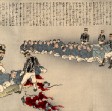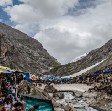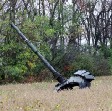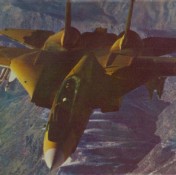Ukraine War, 12 December 2022
Good morning everybody!
Two days later than planned (held up by work), but here we are. Let’s check what’s going on….
UKRAINIAN POWER GRID
Following a total of eight waves of missile strikes (the last of these on the evening of 6 December: it included at least 16 Shahed-136s and targeted the DTEK, Ukraine’s largest private energy company), over 40% of the high voltage grid of Ukraine is badly damaged, as is a similar percentage of thermal- and hydroelectric power plants. Means: the Ukrainian power grid is now in a really bad condition, and no 1 million of power generators delivered by the West is going to change that. The result are multiple power outages in Kyiv and the neighbourhood, parts of Dnipropetrovsk and the Odesa Oblast. Much of the Sumy and Kremenchuk areas are without heating for more than a week. Emergency repairs are going on, but that’s likely to take a few days longer — even more so because much of what’s left of the power grid is overloaded by the consumption, and thus ‘instable’, while most of heavy equipment destroyed by Russian missile strikes takes, literally, weeks to replace… or is hard to repair… Because of this, the authorities are repeatedly forced to impose emergency shutdowns…
As for why and how’s that with power grids working — in sense of technology involved — cannot but recommend the article here: What’s up with the Power? How Russia destroys Energy Infrastructure.
Atop of this, during the night from 9 to 10 December, the Russians released a stream of 15 Shahed LPGMs from somewhere on the eastern coast of the Sea of Azov against southern Ukraine. Ten were shot down while approaching Kherson (4), Mykolaiv (4), and Odesa (2), but the five that came through have knocked the power supply of the latter: ever since, 1,3–1,5 million of Ukrainians in the Odesa Oblast are without electricity, heating, and water. According to the DTEK Odesa (the local energy supplier), repairs are likely to take 2–3 months. Local authorities rushed to officially ‘shorten this to a few days’, but I think that right now nobody can say for sure then, if nothing else: even once emergency repairs are going to be completed, it’s still going to take ‘time’ (say: days) to re-establish the power grid, stabilise it and make it work…. Unsurprisingly, the local authorities have recommended evacuation of those who think they are likely to have resulting problems.
To make sure: this is not just, ‘oh, no light on the streets by night’, no ‘can’t re-charge my smartphone’-, or ‘damn, no internet tonight’-situation. It’s is a very serious crisis. When there’s no electricity and no water, it’s not only that hospitals, care- and nursing homes, kindergartens, and schools are going to experience growing problems with their function: most of the economy is standing still. One, literally, can’t make him/herself even a cup of coffee or tea, not to talk about inability to flush a toilette or take a shower: that’s certain to cause problems with hygiene. If the situation prevails and homes are not heated for longer, it’s going to cause additional problems with water supply, because piping is going to burst when freezing…. It’s certain to cause problems with food supply, because freezers aren’t working: of course, one can keep the food outside, it’s cold enough, but try doing that in quantities necessary to keep 1,3–1,5 million of people supplied…or try running poultry farms without electricity and water….which in turn means no eggs and no chicken meat, but probably millions of dead birds, which is again dangerous for health…. Another example: try milking enough cows to produce enough milk to keep the population supplied — without electrical milking machines….
Lack of electricity is going to cause a problem with transportation — and thus the flow of supplies for both the civilians and the ZSU: in this regards, it’s good the Ukrainians have forced the Russians to withdraw from Kherson ‘on time’ (in turn enabling a partial evacuation of the local population, too), otherwise, with the Russians still on the western side of the Dnipro, the situation would be even more critical. And then there are issues like security (no power, no phones, thus no way to call the police…).
AIR/MISSILE WAR
Contrary to expectations of several daydreamers in the West (especially those who seriously think any of Western governments could impress the IRGC-controlled regime in Tehran; see my last report), and despite continuously growing unrest at home, Iran is said to have delivered another batch of Shahed-136 LPGMs to Russia. RUMINT has it: about 150 or these.
By now it’s clear: contrary to Russian Orlans, these are not sensitive to frost, nor to rain or even snow. If there is any kind of a ‘limitation’ to their operations, then really bad weather and (thank you for an excellent question in this regards!) the number of control stations the Iranians were able to provide so far. Apparently, the latter is limiting the number of Shaheds the Russians can deploy to about 15, perhaps 17 ‘at once’.
On the other hand, notable is that the last two strikes by Shaheds took place by night, and that both resulted in several ‘mopeds’ (Ukrainian nick-name based on the sound of their engines) getting through and causing damage — indeed: scoring very precise hits (more precise than would be possible by the Russian ballistic- and cruise missiles). Seems, this is confirming the RUMINT along which the attrition (see: losses) have decreased the ability of the Ukrainian Air Force to continue scrambling its interceptors ‘any time of the day’. With this, the ZSU lacks its ‘first line of defence’ against such air strikes, and is limited to the ‘second- and third line of defence’: SAMs (surface-to-air missiles) and anti-aircraft guns. These in turn are far less flexible than manned interceptors…
Except for Odesa, the Russians are regularly and heavily shelling the Sumy Oblast (over 50 missile- and rocket attacks are registered every day), and Kherson. Their missile strikes from the night from 9 to 10 December have hit a hospital in Kherson, plus infrastructure facilities, several shops and warehouses, killed at least two, and wounded eight people. With other words: whatever the ZSU might have secured of the eastern and southern bank of the Dnipro (and the exact extension of any possible success there remains under a big question mark), it is not enough to force the Russian multiple rocket launchers and long-range artillery outside the range of the battered city. The only good news is that heating has been restored to about 60% of the city…
Certainly enough, the ZSU is still hitting back. As is well-known, during the night from 4 to 5 December, it deployed at least four Tu-141/143 drones to hit Engels-2 AB and Dygilevo AB. Ever since, there is quite some discussion about effects of that attack. Up front: yes, although — for example — the Engels-2 was protected by two S-400 SAM-sites, the drones came through, eventually forcing the VKS to withdraw most of its operational bombers from both air bases.
Considering the failure of two S-400 SAM-sites to protect such an important base, this withdrawal was the sole solution possible. The VKS has only about two dozens of operational Tu-95MS; their production ended before most of people who are going to read this were born, and thus they’re precious. No point in keeping them exposed on ‘defenceless and peaceful’ air bases this close to Ukraine. That said, neither Engels-2 nor Dygilevo are ‘nuclear bases’: that’s not working that way. In Russia, nukes are controlled by (Putin-controlled) Rosgvardia and kept in their own storage facilities. I.e. they would have to be brought to Engels and similar bases to be deployed by VKS bombers, first.
Eventually, the VKS is going to continue operating its Tu-95s, and Tu-160s, and Tu-22M-3s against Ukraine — but from some other place. After re-stocking its depleted stocks of cruise missiles, of course.
Thus, this was a success, yes, but of temporary nature. I still think the ZSU did much better when blowing up the POL depot at the Kursk AB, few hours later: such blows can ground an entire wing of VKS fighter-bombers for at least a few days.
Less understandable to me is the Ukrainians strike by two drones on the Slava plant in Bryansk (about 50km from the border. This was set on fire yesterday (11 December). Don’t know what was manufactured there, so no idea why was this place as important.
Much more effective was a combination of M142 HIMARS and UAV strikes on at least nine Russian headquarters and storage depots in the southern Zaporizhzhya (two in Melitopol and three in the Tokmak area), plus — by UAVs — three or four on the Crimean peninsula. Word is that the VSRF suffered over 300 casualties in all of these, and now I’m not surprised any more that all the ‘online-Russians’ are firmly convinced there will be an Ukrainian offensive in this area.
Tragically, Ukrainian air force lost a Mi-8 on 11 December: this hit a house, killing the entire crew.
EASTERN UKRAINE
According to Putin, not only reservists, but 150,000 of youngster recruits have been deployed to Ukraine, meanwhile, and ‘this is enough’: we’re going to see — if this is really ‘enough’, but especially for how long can the VSRF’s battered logistics system keep them supplied this time — and that in during the winter.
In general, the Russians continued running their Zerg Rush attacks for much of this week. By now, the reason is obvious: they’re constructing a defence line some 20–30 kilometres further to the rear — foremost in western Luhansk, but in parts of Donetsk, southern Zaporizhzhya, north of Mariupol, and east of the Dnipro. With other words: Putin/Surovikin are buying time with thousands of killed reservists, hoping they might develop defences strong enough to stop the next Ukrainian offensive, whenever this comes (probably as soon as the ground it frozen, in late December, or early January) — or at least prevent another catastrophic collapse of the frontlines, like it happened two times since late August.
BATTLE OF DONBASS
According to the British intel, the part of the frontline from the border down to Svatove is now held by the 1st Guards Tanks Army (GTA): this was completely demolished in the first seven months of the war, and was ‘reconstructed’ with help of mobilised reservists, the last two months. Might be back to about 500 main battle tanks and 20,000+ troops, meanwhile.
The Svatove area is now held by a strong concentration of — nominally — ‘crack’ VSRF units, all reconstituted by reservists. From north towards south, these are including the 2nd Guards Motor Rifle, the 4th Guards Tank, and the 47th Guards Tank Divisions, plus two motor rifle brigades, supported by one rocket brigade. In their rear, the newly-constructed defence line in the rear is held by three Spetsnaz brigades.
The Kremina area is held by the 144th Motor Rifle Division, reinforced by the 3rd Spetsnaz Brigade, 3rd Motor Rifle Division, and the 208th LPR Regiment. The last few days, these have managed to force elements of the 25th and 95th Airborne Assault to withdraw from Chervonopopivka (north of Kremina). Guess, the ZSU will have to find a different way to that town.
Siversk…since three days, the Russians — which is the BARS-7 and the 74th Guards Motor Rifle Brigade — are running sustained attacks on Bilohorivka (the one on the Siversky Donets, held by the 27th Infantry Brigade of the National Guard). That said, south of there it’s meanwhile the Ukrainian 10th Mountain that is counter-attacking… Bilohorivka (the one between Yakovlivka and Vasylivka).
Bakhmut… the completely ruined town is meanwhile held by elements of the 71st Jäger, 4th Rapid Reaction, 58th Motor, 112th and 241st TD Brigades, plus two Chechen Battalions (Dzhokhar Dudayev and Sheikh Mansour) — all supported by the 44th Artillery. The Kastus Kalinovski Battalion is still around, but the Georgian Legion seems to have been withdrawn after suffering quite some losses during the Wagner attack south of the town, in late November. Also withdrawn were the 30th and 93rd Mech — at least from the first line of defence. In essence: this means the ZSU not only reinforced, but completely replaced its exhausted (93rd) and/or battered units (30th) in this area. This was done at the cost of some loss of terrain (see below for details).
Over the last, say, two weeks, the Russians focused on crossing the open area east of the town, and are currently assaulting Bakhmut from north-east, east, south-east, and south. There are contradicting reports about whether they have managed to entrench themselves in the eastern outskirts and reached the Fedora Maxymenka Street in the south-east (apparently the most critical sector of the frontline, the last two-three days). They did secure most of the local garbage dump (or the Ukrainians have left them have it). Seems, while replacing its battered units, the ZSU has withdrawn about 200 metres in the east, and about 100m in the south-east, but in turn I’m not sure if the Russians are still inside southern Opytne (actually, RUMINT has it Ukrainians are counterattacking into Ivanhrad, since around 6 or 7 December; just found no evidence for this).
That said, word is that the VSRF is improving its tactics: meanwhile, led by the Spetsnaz, which is constantly trying to find weak spots in Ukrainian positions, they’re pushing west of Opytne (now held by the 54th Motor and/or 71st Jäger; 30th seems to have been withdrawn), and every Zerg Rush is supported by air strikes, and all with plentiful artillery. Indeed, some of Russians are reporting ‘particularly precise’ air strikes: no idea even how do they want to know, because the mass of VKS (and Wagner) air strikes are still flown in ‘spray and pray’ fashion, where less than 1% of deployed ordnance is likely to hit anything at all.
Further south, the Russians are attacking Klishchiivka and west from Kurdiumyvka (the Ukrainian side is held by the 58th Motor and the 62nd Mech, supported by the 3rd Tank). No idea what do they want to achieve there — except to get cut to pieces, of course — because when doing this, they have to leave their cover and advance over open fields towards Ukrainians who are well-entrenched on a chain of low hills west of them. Certainly enough: why should Putin and/or Surovikin care…?
Toretsk….new (to me) are Russian attacks on Druzba and Pivinichne, two villages on the north-eastern side of Toretsk. Both were launched from Mayorsk (captured in late November), and both were repelled, but guess we need to watch this area from now on.
Avdiivka…surprisingly enough, seems, this was a quiet week in this area.
Pervomaiske-Pisky area…The 56th Motor is not only holding firmly in Pervomaiske: sometimes between 2nd and 4th December, it counterattacked in south-eastern direction and drove the remnants of the 100th Motor Rifle Brigade (DPR) out of Pervomaiske, via the incomplete highway, all the way down to southern side of central Pisky. With other words: the Separatists have lost something like two months of their ‘conquest’ in this area.
Marinka….heavy clashes reported there, since the Russians attempted to bypass the place to attack Pobieda — and were repelled, two days ago.
Vuhledar… RUMINT has it that the 72nd Mech (supported by elements of the 1st Tank) not only repelled repeated attacks of the 155th Guards Naval Infantry Brigade (VSRF), but also caused it massive losses in Pavlivka. Perhaps even counterattacked south-east of this village. If so, this would not only become the second Russian brigade mauled in Pavlivka of the last month, but also a ‘proper’ end for chaotic and catastrophic Russian efforts in this area.






